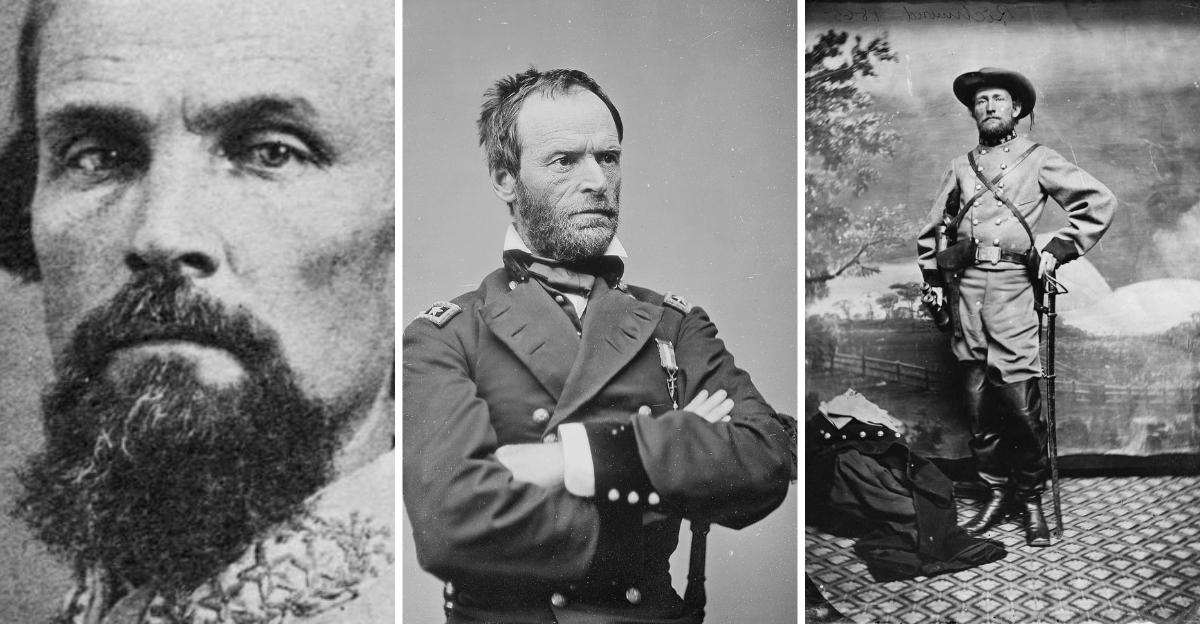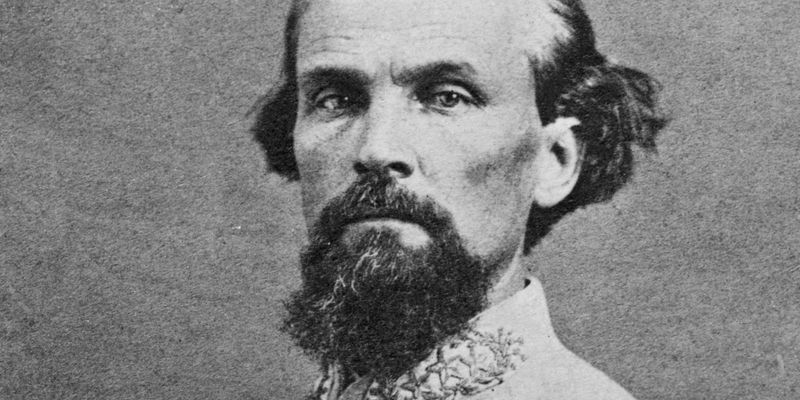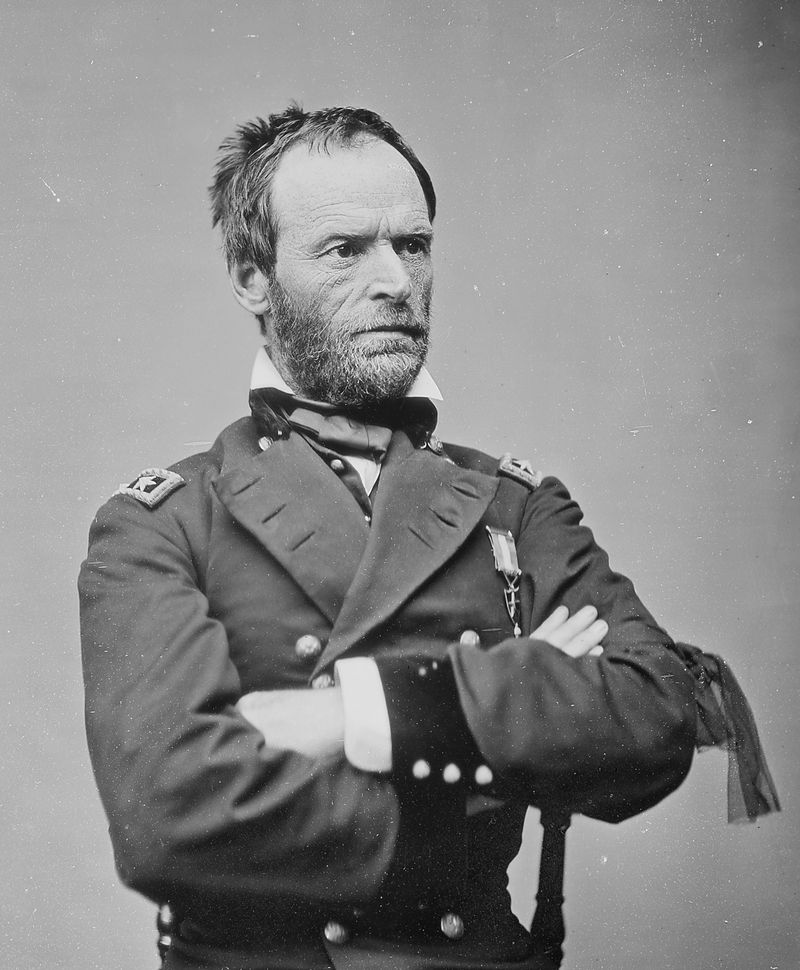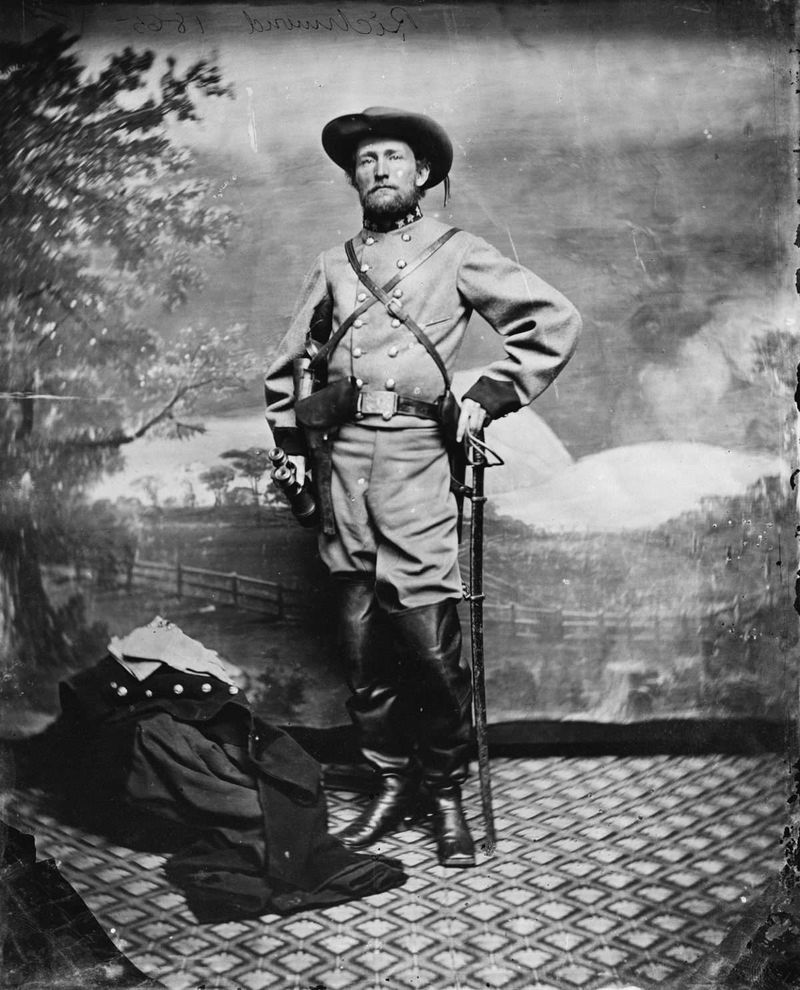The American Civil War wasn’t just a battle between states—it was a showcase of incredible military talent. From 1861 to 1865, certain soldiers earned reputations that struck fear into enemy hearts. Their battlefield skills, strategic minds, and sheer determination made them legends during America’s bloodiest conflict. Let’s look at three fighters who became the most feared figures of this devastating war.
1. Nathan Bedford Forrest: The Wizard of the Saddle
Starting the war as a private and ending as a lieutenant general, Nathan Bedford Forrest embodied raw fighting spirit on the battlefield. Despite having no formal military education, this former slave trader and businessman possessed an uncanny ability to sense weakness in enemy lines. Union soldiers would tremble upon hearing Forrest’s cavalry was nearby, knowing his reputation for lightning-quick raids and ruthless pursuit. “Get there first with the most men” became Forrest’s famous battle philosophy. His cavalry units moved with astonishing speed, sometimes covering 50 miles in a single day when other forces struggled to march 10. What made him particularly frightening was his personal fighting style—he reportedly killed 30 Union soldiers in hand-to-hand combat, had 29 horses shot from under him, and still kept fighting.
Forrest’s guerrilla tactics revolutionized cavalry warfare. He understood that mobility created advantage, often dismounting his men to fight as infantry when needed. His most infamous moment came at Fort Pillow in 1864, where his forces were accused of massacring surrendering Black Union soldiers, further cementing his fearsome reputation. His tactical genius showed at the Battle of Brice’s Crossroads, where he defeated a Union force twice his size through clever positioning and aggressive attacks. Even Union General William Sherman acknowledged Forrest as “the most remarkable man the Civil War produced on either side.”
After the war, Forrest’s legacy became deeply controversial due to his involvement with the early Ku Klux Klan. However, strictly as a military commander, few matched his natural talent for warfare. He won battle after battle while being outnumbered, outgunned, and fighting against professionally trained officers. His opponents never knew where he would strike next, creating a psychological fear that sometimes defeated Union forces before bullets were even fired.
2. William Tecumseh Sherman: The Merchant of Terror
Red-bearded and intense, William Tecumseh Sherman brought psychological warfare to a new level during the Civil War. Unlike commanders who focused solely on defeating armies, Sherman understood that breaking civilian support for the war would hasten Confederate defeat. His infamous March to the Sea through Georgia in late 1864 wasn’t just a military campaign—it was a deliberate attempt to destroy Southern morale. “War is cruelty, and you cannot refine it,” Sherman once declared, perfectly capturing his unsentimental approach to conflict. His troops cut a destructive path 60 miles wide and 300 miles long from Atlanta to Savannah, destroying railroads, factories, farms, and anything else that could support the Confederate war effort.
The mere mention of Sherman’s name would cause panic in Southern communities, as civilians fled with whatever possessions they could carry. What made Sherman especially fearsome wasn’t personal battlefield prowess but his willingness to embrace war’s harshest realities. He pioneered “total war” against the Confederacy, targeting economic infrastructure rather than just opposing armies. Sherman’s men twisted heated railroad tracks around trees (called “Sherman’s neckties”) and systematically dismantled Georgia’s ability to supply Confederate forces. His tactics weren’t universally approved even in the North. However, his friendship with General Grant and President Lincoln gave him freedom to pursue his destructive strategy. Sherman’s psychological impact extended beyond physical damage—his army’s unstoppable advance created a sense of inevitable defeat throughout the South.
Behind Sherman’s ruthless exterior was a brilliant military mind. He graduated sixth in his class at West Point and demonstrated exceptional logistical planning. Unlike many Civil War generals who sought glorious battles, Sherman preferred strategic maneuvers that minimized his casualties while maximizing enemy suffering. His methods proved effective but controversial, establishing him as one of history’s most feared—and effective—military commanders.
3. John Singleton Mosby: The Gray Ghost
While some Civil War fighters gained fame through conventional battles, Colonel John Singleton Mosby struck fear through invisibility and unpredictability. Nicknamed “The Gray Ghost,” this Confederate ranger pioneered guerrilla tactics that kept Union forces in northern Virginia in constant terror. Mosby’s Rangers would materialize from nowhere, strike with devastating precision, and vanish before reinforcements could arrive. Before the war, Mosby was simply a lawyer with no military training.
His transformation into one of the war’s most feared fighters began after joining cavalry leader Jeb Stuart’s command. Standing only 5’7″ and weighing about 125 pounds, Mosby’s physical appearance didn’t intimidate—but his reputation certainly did. Union General Philip Sheridan placed a $5,000 bounty on his head, dead or alive. Mosby’s 43rd Battalion Virginia Cavalry never numbered more than 300 men, yet they tied down thousands of Union troops who might otherwise have joined major campaigns. His men didn’t wear standard uniforms and blended with civilian populations when not fighting. This unconventional approach frustrated Union commanders who couldn’t distinguish friend from foe in Mosby’s territory, known as “Mosby’s Confederacy.”
His most audacious raid came in March 1863, when he captured a Union general from his bed at the Fairfax County Courthouse—right in the middle of thousands of Federal troops. Stories of Mosby’s exploits spread throughout both armies, creating an almost mythical reputation. Union soldiers assigned to northern Virginia lived in constant fear of nighttime raids. Unlike many Confederate leaders, Mosby adapted well to post-war life, becoming friends with President Ulysses S. Grant and serving in diplomatic posts. His guerrilla tactics influenced future warfare worldwide, particularly insurgency strategies. During his active service, Mosby was wounded seven times yet always returned to fight. His ability to materialize, strike, and disappear earned him respect from both sides and established him as one of the Civil War’s most feared and effective fighters.



